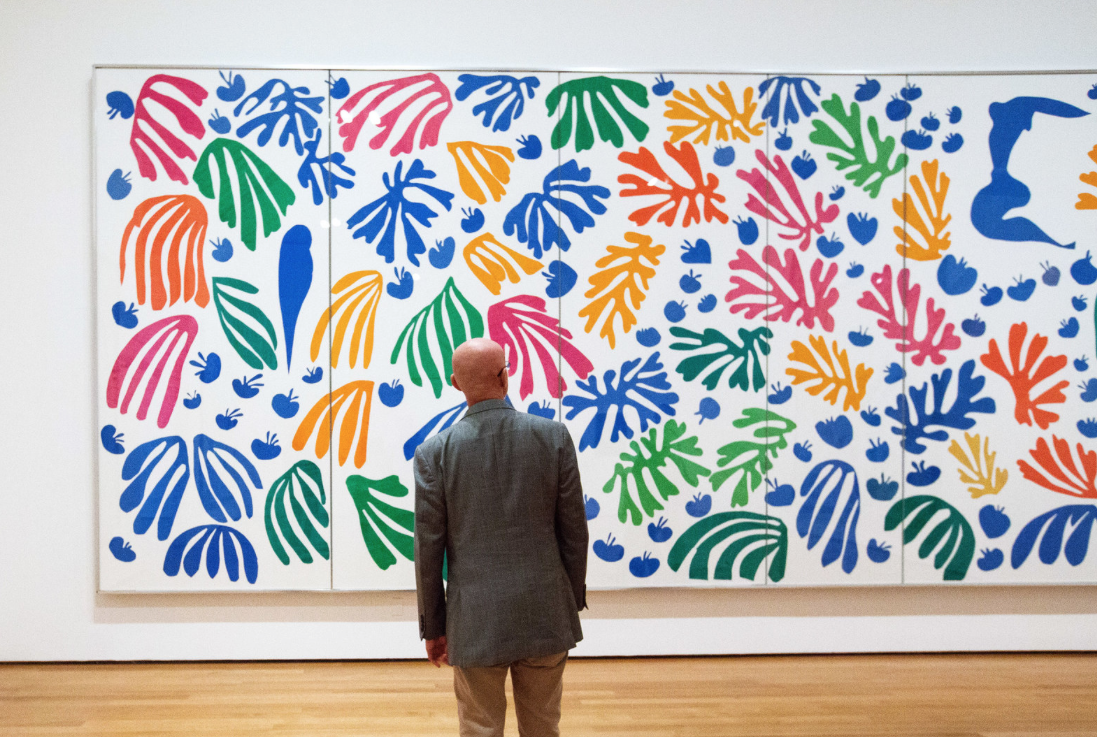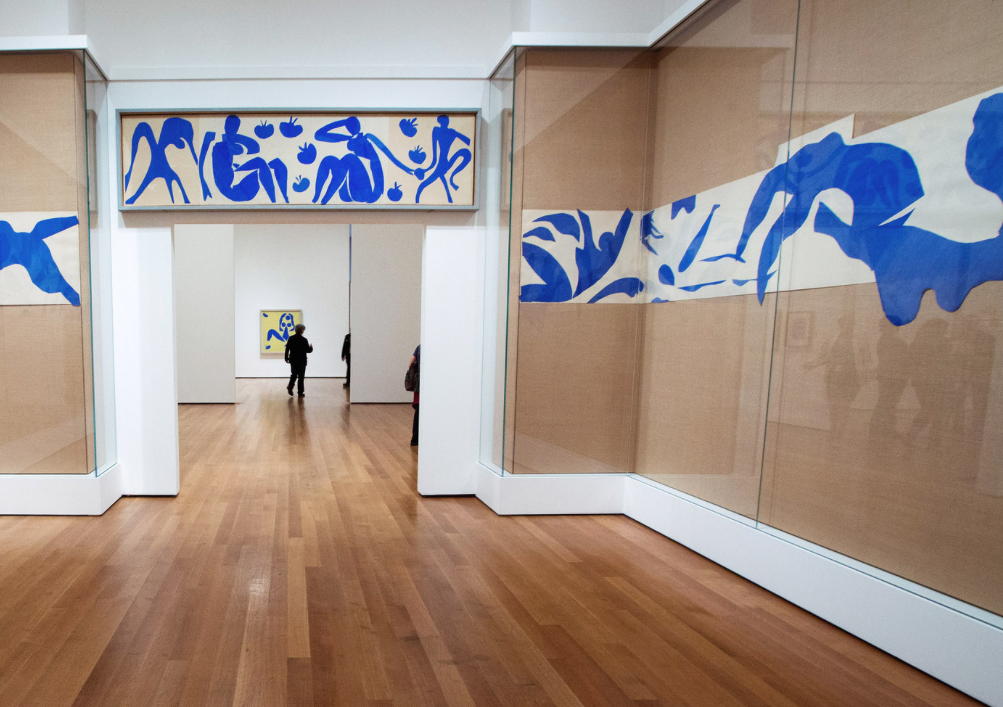Speaking of museums and their digital presence, MoMA has an interactive exhibit covering their recent Matisse exhibition. I was lucky enough to be in New York for the AHA conference in early January, and I was able to see "Henri Matisse: The Cut-Outs" before it ended. Photography was not allowed inside the exhibit, though, so the images here are from the web. The New York Times also has an interactive Matisse "walk through." It functions as an active panoramic image, whereby you can scroll as though you were walking through the exhibit at MoMA.
Both of these interactive digital projects are wonderful, but of course nothing compares to viewing the artwork in person. I was surprised to see how large and expansive the cut-outs were, like The Parakeet and the Mermaid (over 11 feet high, and over 25 feet wide).

The Swimming Pool is especially daunting to understand through photographs because of its placement high on the wall, and how it runs around the inside of the room – it made me feel as though I was standing on the bottom of the pool, looking up at the surface of the water and the people above.

From the review of “Henri Matisse: The Cut Outs” at The New York Times:
Surgery had left him debilitated, basically chair and bed bound. Painting and sculpture had become physical challenges and, I think, emotionally, too freighted with make-it-new demands. At the same time, sheer relief at having survived mortal crises prompted a rush of creativity. His solution, before he even recognized it was such, was almost child-simple. He picked up more manageable materials and tools: sheets of paper paint-washed by assistants, sturdy scissors, and plain tailor pins. What he made from them was a hybrid of chromatic brilliance and dimensional complexity, work that was not quite painting, not quite sculpture and — this was the really radical part — not necessarily permanent.
The obvious question, though, was what to do next with such mutable, piecemeal creations. Questions about the practicalities of exhibiting, storing, and selling them quickly arose.
The lack of permanence in Matisse’s work definitely comes across in the MoMA exhibit – it presents a snapshot of work in progress, either by Matisse, his assistants, or the museum itself.
There is also the further extension of Matisse’s work into the digital realm. On the Internet those questions of exhibition storage, and commodification are even more potent – for any artist, let alone Matisse. In the digital environment Matisse’s art is remixed and repurposed, cut with virtual scissors, colored with glowing screens, and repositioned with mouse and keyboard. I like to think of Matisse’s Cut-Outs as existing in “permanent beta,” never finished, always in motion, dynamic and mutable.
(Revised and republished April 19th, 2025)